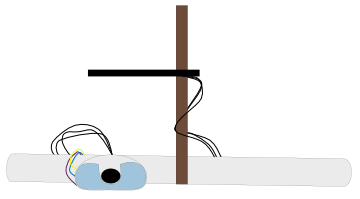
Augmented Flute
Learning to play the transverse flute is not an easy task, at least not for everyone. Since the flute does not have a reed to resonate, the player must provide a steady, focused stream of air that will cause the flute to resonate and thereby produce sound. So, in contrast to a piano or a drum where it easy to produce a sound, this initial step is already rather difficult for the flute. In order to produce a sound the player has to be aware of the embouchure position to generate an adequate air jet. For a beginner, this can be a difficult task due to the lack of visual cues or indicators of the air jet and lip position. This project attempts to address this problem by presenting an augmented flute that makes the parameters of the embouchure visible and measurable. The augmented flute shows information about the area covered by the lower lip, estimates the lip hole shape based on noise analysis, and shows the air jet direction. Additionally, the augmented flute provides directional and continuous feedback in real time, based on data acquired from experienced flutists.
This is a project by Meiying Cheung and Florian Heller.
-
![[PDF]](http://www.heller-web.net/wp-content/plugins/papercite/img/pdf.png) F. Heller, I. M. Cheung Ruiz, and J. Borchers, “An Augmented Flute for Beginners,” in NIME ’17: Proceedings of the International Conference on New Interfaces for Musical Expression, 2017.
F. Heller, I. M. Cheung Ruiz, and J. Borchers, “An Augmented Flute for Beginners,” in NIME ’17: Proceedings of the International Conference on New Interfaces for Musical Expression, 2017.
[Bibtex]@inproceedings{heller2017a, author = {Heller, Florian and Cheung Ruiz, Irene Meiying and Borchers, Jan}, booktitle = {NIME '17: Proceedings of the International Conference on New Interfaces for Musical Expression}, location = {Copenhagen, Denmark}, publisher = {Aalborg University}, series = {2220-4806}, title = {An Augmented Flute for Beginners}, volume = {17}, year = {2017}}